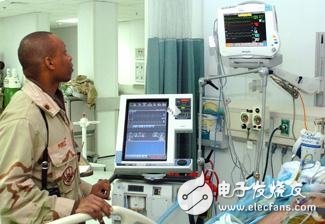The healthcare industry has brought some good news to high-tech companies. According to the survey results announced at the annual meeting of the American Society of Healthcare Information and Management Systems (HIMSS) held in New Orleans, USA on March 3-7, 2013, the healthcare organization will recruit hardware, software and IT personnel for the second consecutive year Invest millions of dollars to provide better medical services.
In 2013, the HIMSS leadership survey received responses from 298 chief information officers (CIOs), IT directors and other executives from about 600 hospitals across the United States. The survey results show that about a quarter of the respondents believe that security systems (22%) are their most concerned infrastructure, 18% said that server / virtual server is their focus, and 16% said they will be committed Mobile device connection was introduced to its healthcare company.
Electronic health records
In 2013, medical and health expenditures will increase again, bringing opportunities to hardware, software and service providers.

The records in the electronic health record can be shared among multiple devices and institutions through various supporting technologies.
If you have been concerned about the adoption of technology in the healthcare industry for the past four years, you will understand that according to the provisions of the Economic and Clinical Health Information Technology Act (HITECH Act), hospitals, physicians ’clinics and outpatient departments must adopt electronic health records (EHR) ), Which will digitize the case and free clinicians from the chart paper that records patient information. The HITECH Act is an integral part of the US Recovery and Reinvestment Act of 2009.
Incentive measures to promote the transformation of archives
In order to advance the above plan, the US federal government provides financial incentives to hospitals, physician clinics and other medical institutions to promote their adoption of EHR. To date, the federal government has distributed more than $ 11 billion to hospitals and physician clinics that use certified EHRs. These medical units receiving financial incentives must prove that they have met certain requirements set out in a three-stage government plan, indicating that they are effectively using EHR technology.
Why are companies such as Dell, HP, NetApp and Apple concerned about the impact of EHR adoption? First, as more and more patient information enters the EHR, a large amount of data needs to be stored, reliably transmitted, and effectively analyzed using multiple technologies. Servers and storage hardware for storing and managing data, and cloud computing platforms that help physicians easily access patient information will be adopted. Medical and health institutions also need more bandwidth and the support of telecommunications equipment to facilitate the transmission of large amounts of data over the Internet.
Data pressure
As medical and health institutions continue to generate large amounts of data, it is necessary to use analytical equipment to discover trends and patterns from clinical data, as well as equipment that can sort out financial and administrative information. Not only that, doctors, nurses, and other clinicians are increasingly using smartphones and tablets when using handheld devices to access data. The establishment of a telemedicine technology platform to facilitate physicians and patients in different locations to use high-definition video conferencing equipment and other supporting technologies for video calls is also increasing.
The news from this year's HIMSS meeting shows that high-tech companies are eager to provide hardware, software and services to the healthcare industry that is implementing the effective use of the second stage of the requirements. In the second stage, more clinical data reporting work is involved, and more technology is needed to support these work.
According to the HIMSS survey results, most IT executives report that they have reached the first stage of effective use, and many leaders have turned their attention to the second stage of effective use. In fact, the survey found that more than one-quarter (28%) of organizations have placed the systems required for effective deployment as their priority IT work. A quarter (25%) of the respondents also said that they would invest at least US $ 1 million to meet the requirements of the second stage.
Manufacturers
Dell wants to have a place in it. The company announced a partnership with Red Hat, Intel and VMware to open a dedicated center where hospitals can test and deploy a new option to run Epic Systems ’Electronic Health Record (EHR) on Red Hat Enterprise Linux software.
According to related news, last year Epic Systems added Red Hat Enterprise Linux to its list of target platforms. Before that, the software only ran on AIX and other UNIX servers. Since running this software on a Dell Intel x86 server may reduce the total cost of ownership, this combination may be a cost-effective option for hospitals.
Motorola Systems is also keen to expand its customer base in the healthcare field, displaying its latest healthcare mobility solutions, including the MC40 HC handheld mobile computer and the SB1 smart logo. The MC40 HC handheld mobile computer can be used by clinicians to access patient information. The SB1 Smart Logo is a wearable product that enables healthcare workers to scan barcodes and communicate with other colleagues via push-to-talk.
Although the uncertainty in the economic situation is still high and many original equipment manufacturers (OEMs) face huge challenges, it should be known that the healthcare industry provides a huge opportunity for OEMs. The United States is seeking ways to modernize the medical and health system to meet the needs of the 21st century. On this occasion, I hope the high-tech industry can provide the right technology at the right price.
Balcony Light, Led Flat Panel Light, Ceiling Light Outdoor, Ceiling Light with Plug
Shenzhen Dianjiang Engineering Co. LTD , https://www.isourceled.com
